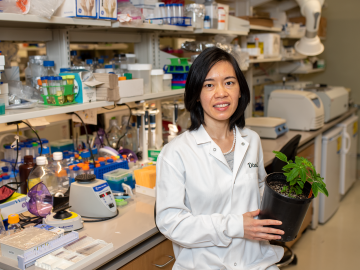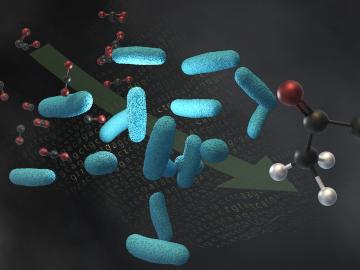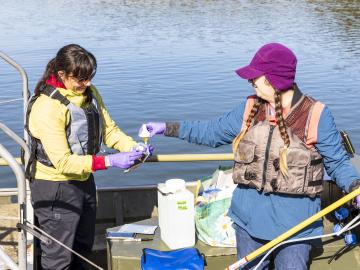
Filter News
Area of Research
- (-) Biology and Environment (60)
- (-) Electricity and Smart Grid (1)
- Advanced Manufacturing (6)
- Building Technologies (2)
- Computational Biology (1)
- Computational Engineering (3)
- Computer Science (15)
- Energy Science (107)
- Energy Sciences (1)
- Functional Materials for Energy (1)
- Fusion and Fission (29)
- Fusion Energy (17)
- Isotopes (1)
- Materials (71)
- Materials for Computing (17)
- Mathematics (1)
- National Security (32)
- Neutron Science (20)
- Nuclear Science and Technology (21)
- Nuclear Systems Modeling, Simulation and Validation (1)
- Quantum information Science (8)
- Supercomputing (130)
News Topics
- (-) Advanced Reactors (1)
- (-) Computer Science (19)
- (-) Cybersecurity (1)
- (-) Exascale Computing (4)
- (-) Frontier (4)
- (-) Fusion (1)
- (-) Microscopy (10)
- (-) Polymers (2)
- 3-D Printing/Advanced Manufacturing (11)
- Artificial Intelligence (10)
- Big Data (10)
- Bioenergy (46)
- Biology (74)
- Biomedical (16)
- Biotechnology (14)
- Buildings (3)
- Chemical Sciences (12)
- Clean Water (11)
- Composites (5)
- Coronavirus (13)
- Critical Materials (1)
- Energy Storage (8)
- Environment (92)
- Grid (6)
- High-Performance Computing (21)
- Hydropower (8)
- Isotopes (2)
- Machine Learning (10)
- Materials (13)
- Materials Science (7)
- Mathematics (4)
- Mercury (7)
- Microelectronics (1)
- Molten Salt (1)
- Nanotechnology (7)
- National Security (3)
- Neutron Science (4)
- Nuclear Energy (1)
- Partnerships (6)
- Physics (2)
- Security (2)
- Simulation (16)
- Summit (10)
- Transportation (3)
Media Contacts

Scientists develop environmental justice lens to identify neighborhoods vulnerable to climate change
A new capability to identify urban neighborhoods, down to the block and building level, that are most vulnerable to climate change could help ensure that mitigation and resilience programs reach the people who need them the most.

Jennifer Morrell-Falvey’s interest in visualizing the science behind natural processes was what drew her to ORNL in what she expected to be a short stint some 18 years ago.

Tackling the climate crisis and achieving an equitable clean energy future are among the biggest challenges of our time.

The rapid pace of global climate change has added urgency to developing technologies that reduce the carbon footprint of transportation technologies, especially in sectors that are difficult to electrify.

A team of researchers working within the Center for Bioenergy Innovation at ORNL has discovered a pathway to encourage a type of lignin formation in plants that could make the processing of crops grown for products such as sustainable jet fuels easier and less costly.

Surrounded by the mountains of landlocked Tennessee, Oak Ridge National Laboratory’s Teri O’Meara is focused on understanding the future of the vitally important ecosystems lining the nation’s coasts.

A team of scientists from LanzaTech, Northwestern University and ORNL have developed carbon capture technology that harnesses emissions from industrial processes to produce acetone and isopropanol

ORNL, TVA and TNECD were recognized by the Federal Laboratory Consortium for their impactful partnership that resulted in a record $2.3 billion investment by Ultium Cells, a General Motors and LG Energy Solution joint venture, to build a battery cell manufacturing plant in Spring Hill, Tennessee.

Researchers at Oak Ridge National Laboratory are using a novel approach in determining environmental impacts to aquatic species near hydropower facilities, potentially leading to smarter facility designs that can support electrical grid reliability.

Three ORNL scientists have been elected fellows of the American Association for the Advancement of Science, or AAAS, the world’s largest general scientific society and publisher of the Science family of journals.


